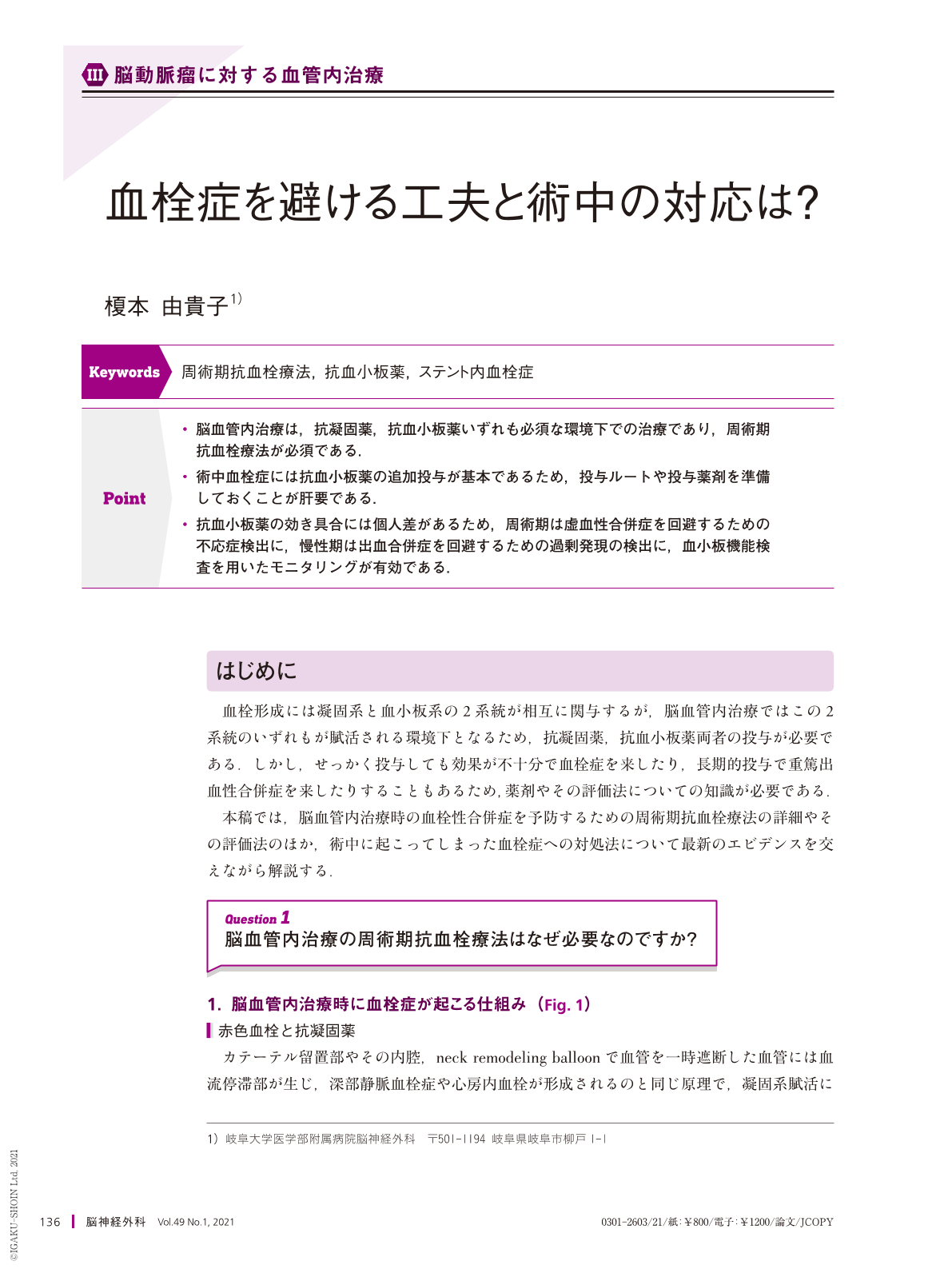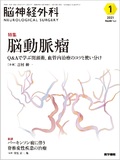Japanese
English
- 有料閲覧
- Abstract 文献概要
- 1ページ目 Look Inside
- 参考文献 Reference
Point
・脳血管内治療は,抗凝固薬,抗血小板薬いずれも必須な環境下での治療であり,周術期抗血栓療法が必須である.
・術中血栓症には抗血小板薬の追加投与が基本であるため,投与ルートや投与薬剤を準備しておくことが肝要である.
・抗血小板薬の効き具合には個人差があるため,周術期は虚血性合併症を回避するための不応症検出に,慢性期は出血合併症を回避するための過剰発現の検出に,血小板機能検査を用いたモニタリングが有効である.
Administration of antithrombotic agents in neuroendovascular therapy is important to prevent periprocedural thromboembolic complications. Both anticoagulants that prevent red thrombi formed by flow stagnation in the catheter and antiplatelets that prevent white thrombi triggered by the implanted foreign body, such as coils and stents, are needed. With the progress of endovascular techniques and development of new devices, periprocedural antiplatelet therapy has been used more aggressively in recent years. Currently, the standard antiplatelet management in many neuroendovascular treatments is dual antiplatelet therapy.
Perioperative antithrombotic therapy may reduce ischemic complications, but it presents the potential risk of hemorrhagic complications. Moreover, long-term dual therapy does not reduce the risk of stroke recurrence and is associated with an increased risk of major bleeding events. For patients at high risk for hemorrhagic complications, the physician should undertake measures, such as reducing the dose or discontinuing it early.

Copyright © 2021, Igaku-Shoin Ltd. All rights reserved.


